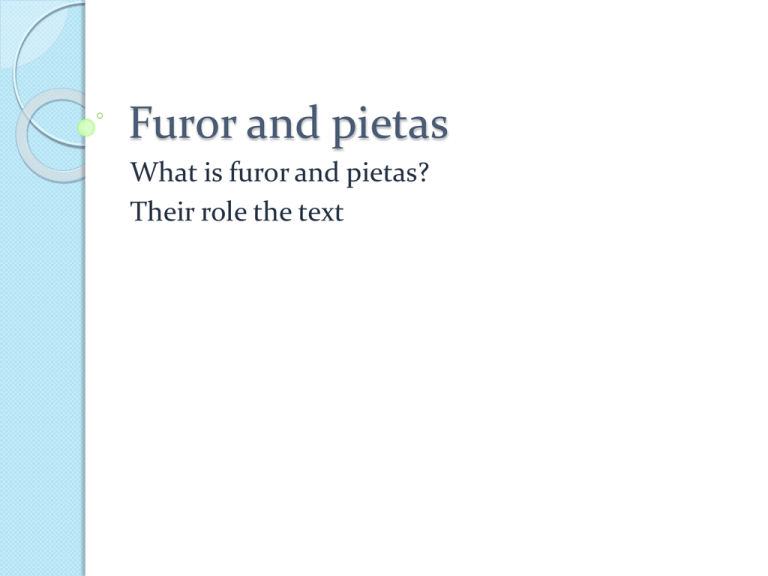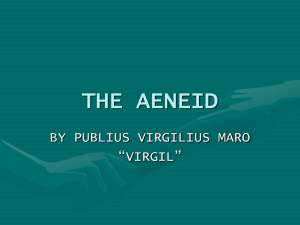Furor and pietas - level3classicalstudies
advertisement

Furor and pietas What is furor and pietas? Their role the text Learning Intention Today we will learn about what furor and pietas are and their functions within the text. We will look at specific examples which will further enable us to understand the text. What is furor? Furor meaning disarray. Words used in the text to describe Aeneas’ various states of disarray: insonia (madness), furor (furios), violentia (ungoverned passion). Role in the text Juno constantly running Aeneas off course but eventually he founds the Roman race and thus restores order. In battle Aeneas is twice (at least) shown as carried away by blood-lust, furor is the cause of his making a fatal tactical mistake. Activity Read the section titled Conflict between furor and pietas, p15 (Findlay). Jot down points that you may have missed. Quirky question. What can be seen in the middle of March and April that cannot be seen at the beginning or end of either month? The letter ‘R’. What is pietas? Pietas means order. Roman value – constantly exhibited by Aeneas. He has moments of furor yet in general he is a calming force and restores order to his group. Role in the text. When Aeneas and his crew are washed up on the shores of North Africa, he goes searching for the rest of his men and kills several deer for the crew to feast on. Aeneas is known as the true, he is pious: “a man so marked for goodness” (Bk 1). Activity. Fill in the sheet.






